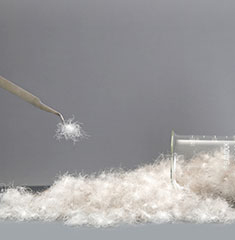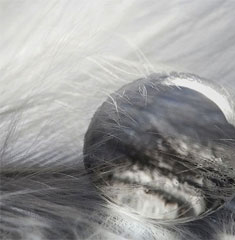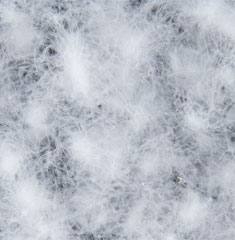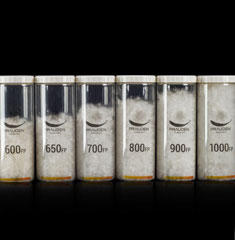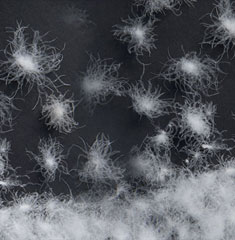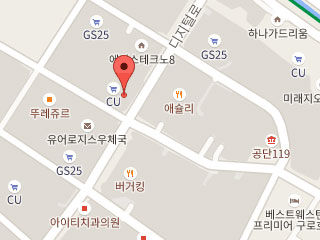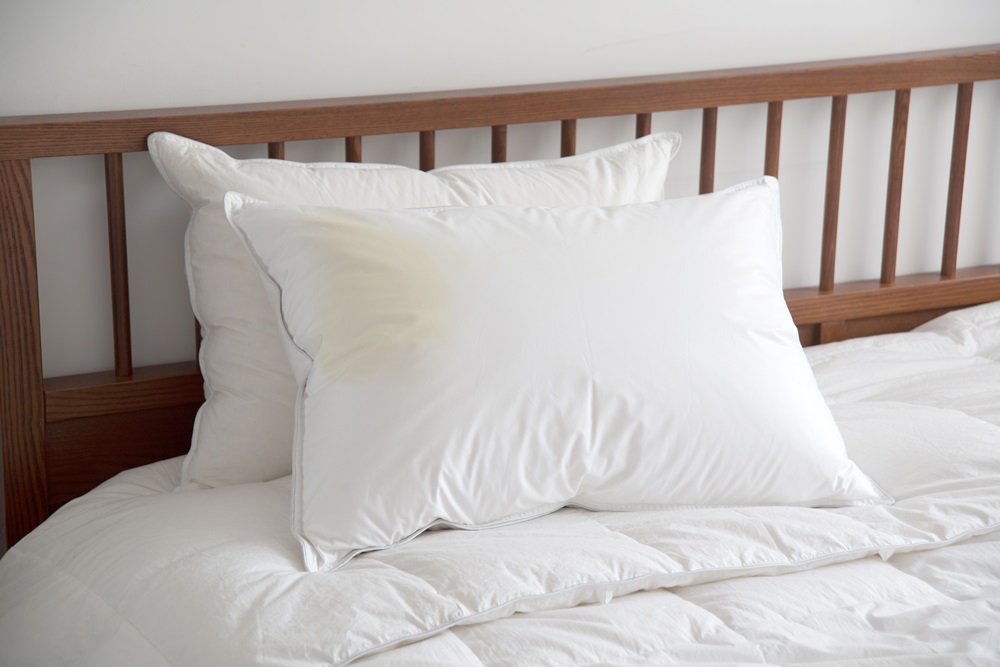
Causes and Solutions of Yellowing in Down Products
2017-12-11
The white-colored down jacket trend that began last year has continued into this year. Although such jackets present a neat and refined image, they require proper care since they are as susceptible to discoloration as they are bright in color. Even so, the fact is that the appropriate methods of caring for down products are not widely known by consumers. This article addresses the various causes of the yellowing that can affect white or bright-colored down products, and presents solutions to the problem in the event they have not been handled properly.
What is Yellowing?
Yellowing of textile refers to the yellowish tinge acquired by textile products due to the application of chemicals or exposure to sunlight. Yellowing is most common when there is a problem with white-colored or light-colored fiber products, but it can also appear on darker-colored clothing of various shades such as brown, blue, red, or orange.
It can occur in various areas including the entire product, or the lining, collar, folded hems or needlework, or areas that come into contact with a hanger or packaging material.
Causes of Yellowing in Down Products
1. Improper laundering
When laundering down products, the care label must be checked thoroughly and the product laundered according to the proper method. This is because the base material and surface treatments used on the side or inner linings vary for each product, and because it is necessary to consider the quality of the down filling itself. The yellowing effect can occur as a result of improper laundering processes, the use of detergents that are unsuitable for the material, or insufficient washing or drying times.
In general, when laundering white-colored down products, they must undergo the full rinse and spin-dry cycles. Yellow stains can appear if detergent or contaminant residue is left inside the down due to an incomplete rinsing time or a short spin-dry time.
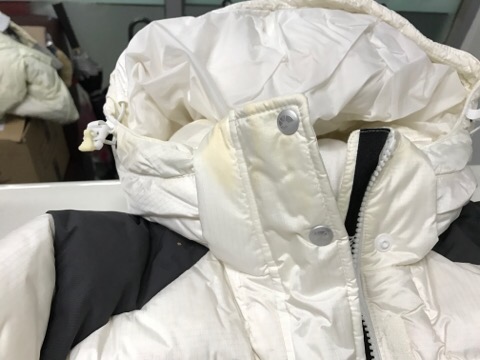
<Yellowing Effects of Laundering>
Solutions
– If there are no special instructions on the care label, launder the product with a neutral detergent. Alkaline or acidic detergents can dissolve the down, causing a reaction that can result in yellowing effects according to the base material or surface treatment type.
– Wash only the contaminated areas.
– Yellowing from detergent residue should be removed immediately by rinsing and drying.
2. Oils
The feathers of water birds (waterfowl) do not become soaked even under water because they secrete oils that protect their feathers in order to keep them afloat. The plumage plucked from a waterfowl thus has a significant amount of oil; in the cleaning and manufacturing process, excess oil is removed to leave a reasonable amount using the appropriate chemicals and processing time. The amount of remaining oil varies depending on national quality standards, but a reasonable level is around 1.5-1.8%. A certain level of oil is required, since if too much oil is removed, the down loses its elasticity and is easily damaged.
However, when too much oil is left over, it can cause yellow staining of the fabric. This is why for each brand, when manufacturing items such as down products, the inspection report on the plumage used in that product is checked thoroughly. PRAUDEN only manufactures products that have passed inspections involving thorough and professional washing and treatment processes, so that they can be used with peace of mind when the product has the right specifications.
Solutions
– Check whether the level of oil is reasonable during production.
– Purchase products which use down from professional processing companies.
3. In case of excessive exposure to sunlight
Fluorescent brightening agents absorb ultraviolet rays (300-400nm), reflecting violet-blue (400-500nm) neon, and are used as a dye to enhance the whiteness of fibers or textiles. Textiles treated with fluorescent brightening agents appear to have a heightened white color, which can give a feeling of pure whiteness. However, this chemical compound has an unstable structure and is susceptible to reaction with sunlight or elements in the air. If the fluorescent dye absorbs ultraviolet light for a short period of time and loses its capability, or if it bonds with nitrogen dioxide (NO2) in the atmosphere, the fluorescent whitening effect diminishes and the fabric can appear yellow, resulting in what looks like yellowing of the fibers. Nitrogen dioxide is a commonly discharged constituent of automobile exhaust, and when bonded with water there is a much higher probability that it will be absorbed by the fabric.
Solutions
– For storage, keep the product in a shaded place free from exposure to direct sunlight.
– Store in a well-ventilated, dry place. Storage with dehumidifying agents is also helpful.
4. Packaging material
Yellowing effects can also occur due to the clothing’s packaging material.
PE, PP film: This is used as the primary packing material for fiber products. Several substances are added during manufacturing, including antistatic agents and ultraviolet absorbents; among these, butylated hydroxyl toluene (BHT) is the one which causes problems. This substance with high-sublimation attaches to the textile’s surface, and causes yellowing effects when it reacts with nitrogen dioxide in the atmosphere.
Paper: Boxes or paper used for fillings contain a considerable amount of lignin left over from the raw pulp. Lignin, a phenolic polymer, when included in paper as an impurity, turns yellowish-brown depending on the temperature, humidity, or light. The example of it may be a case of an old newspaper with the yellowish stain.
In light of this, there has recently been an increase in the number of brands using packaging that does not contain substances which cause yellowing.
Solutions
– During item packaging, make sure there are no substances in the packaging constituents that can cause yellowing.
– Open the packaging to check for yellowing effects before purchasing.
It is important to care for textile items including down products to prevent yellowing effects, and to be aware that once it has already occurred, depending on the cause, there are some cases where it cannot be removed. Additionally, since there are different methods of handling yellowing depending on the cause, it is advisable to have it handled by a professional service.
By PRAUDEN R&D Part, Oh Jun-jae, Yun Ji-won






